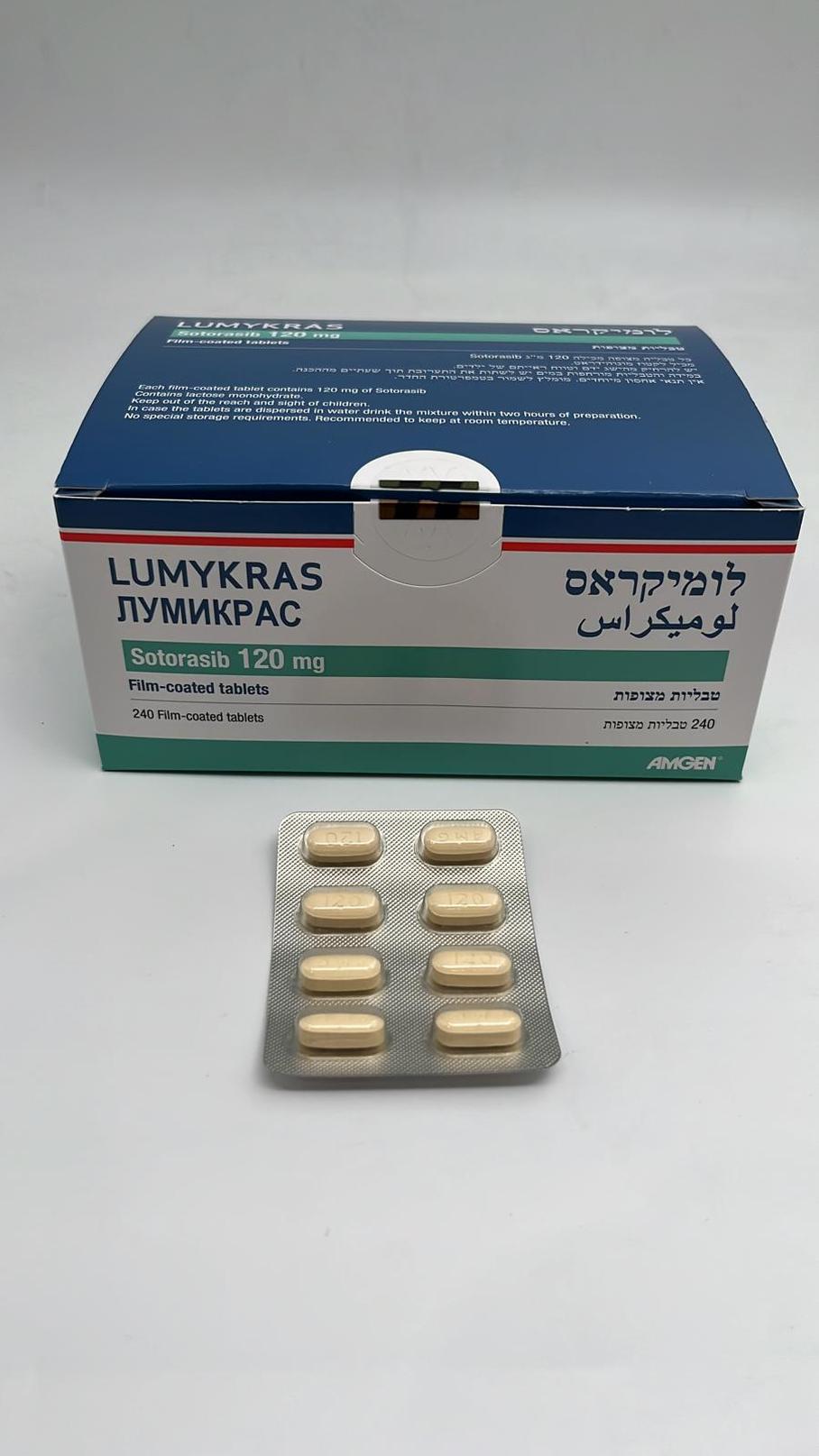Quest for the right Drug

לומיקראס LUMYKRAS (SOTORASIB)
תרופה במרשם
תרופה בסל
נרקוטיקה
ציטוטוקסיקה
צורת מתן:
פומי : PER OS
צורת מינון:
טבליות מצופות פילם : FILM COATED TABLETS
עלון לרופא
מינוניםPosology התוויות
Indications תופעות לוואי
Adverse reactions התוויות נגד
Contraindications אינטראקציות
Interactions מינון יתר
Overdose הריון/הנקה
Pregnancy & Lactation אוכלוסיות מיוחדות
Special populations תכונות פרמקולוגיות
Pharmacological properties מידע רוקחי
Pharmaceutical particulars אזהרת שימוש
Special Warning עלון לרופא
Physicians Leaflet
Adverse reactions : תופעות לוואי
4.8 Undesirable effects Summary of the safety profile The most common adverse reactions were diarrhoea (34%), nausea (25%), and fatigue (21%). The most common severe (grade ≥ 3) adverse reactions were increased ALT (5%), increased AST (4%), and diarrhoea (4%). The most common adverse reactions leading to permanent discontinuation of treatment were increased ALT (1%) and increased AST (1%) and DILI (1%). The most common adverse reactions leading to dose modification were increased ALT (6%), diarrhoea (6%), increased AST (6%), nausea (3%), increased blood alkaline phosphatase (3%) and vomiting (2%). Tabulated list of adverse reactions Adverse reactions reported in LUMYKRAS clinical studies are displayed in table 3 below. Frequency categories are defined as follows : very common (≥ 1/10), common (≥ 1/100 to < 1/10), uncommon (≥ 1/1,000 to < 1/100), rare (≥ 1/10,000 to < 1/1,000), very rare (< 1/10,000), and not known (cannot be estimated from available data). Within each system organ class, adverse reactions are presented in order of decreasing seriousness. The safety of LUMYKRAS was evaluated in 359 patients with KRAS G12C mutated solid tumours who received 960 mg orally once daily as monotherapy. The median duration of exposure to LUMYKRAS was 4.1 months (range: 0.02 to 21). Table 3. Adverse reactions MedDRA system Very common Common Uncommon organ class (≥ 1/10) (≥ 1/100 to < 1/10) (≥ 1/1,000 to < 1/100) Blood and lymphatic Anaemia system disorders Nervous system Headache disorders Respiratory, thoracic Cough ILD/pneumonitis and mediastinal Dyspnoea disorders MedDRA system Very common Common Uncommon organ class (≥ 1/10) (≥ 1/100 to < 1/10) (≥ 1/1,000 to < 1/100) Gastrointestinal Diarrhoea disorders Nausea Vomiting Constipation Abdominal paina Hepatobiliary disorders Drug-induced liver injury Musculoskeletal and Arthralgia connective tissue Back pain disorders General disorders and Fatigue administration site Pyrexia conditions Investigations Aspartate Blood alkaline aminotransferase phosphatase increased increased Blood bilirubin Alanine increased aminotransferase Gamma- increased glutamyltransferase increased a Abdominal pain includes abdominal pain, abdominal pain upper, abdominal pain lower Description of selected adverse reactions Elevated liver enzymes In clinical studies, transient elevations of serum transaminases were observed (see section 4.4). Elevations of ALT occurred in 14% of subjects and elevations of AST in 16% of subjects, with a median time to onset of 8 weeks (range: 1 to 42) and 8 weeks (range: 0 to 42), respectively. Elevations of ALT resulted in dose interruption and/or reduction in 6.1% of subjects, and elevations of AST resulted in dose interruption and/or reduction in 6.1% of subjects. ILD/pneumonitis In clinical studies, among 359 patients who received LUMYKRAS, ILD/pneumonitis occurred in 0.8% of patients, all cases were grade 3 or 4 at onset. The median time to first onset for ILD/pneumonitis was 2 weeks (range: 2 to 18 weeks). LUMYKRAS was discontinued due to ILD/pneumonitis in 0.6% of patients (see sections 4.2 and 4.4). Elderly In clinical studies, no overall differences in safety or efficacy were observed between elderly patients (≥ 65 years old) and younger patients (see sections 4.2 and 5.2). Reporting of suspected adverse reactions Reporting suspected adverse reactions after authorization of the medicinal product is important. It allows continous monitoring of the benefit/risk balance of the medicinal product. Any suspected adverse events should be reported to the Ministry of Health according to the National Regulation by using an online form https://sideeffects.health.gov.il/

שימוש לפי פנקס קופ''ח כללית 1994
לא צוין
תאריך הכללה מקורי בסל
לא צוין
הגבלות
לא צוין
מידע נוסף
